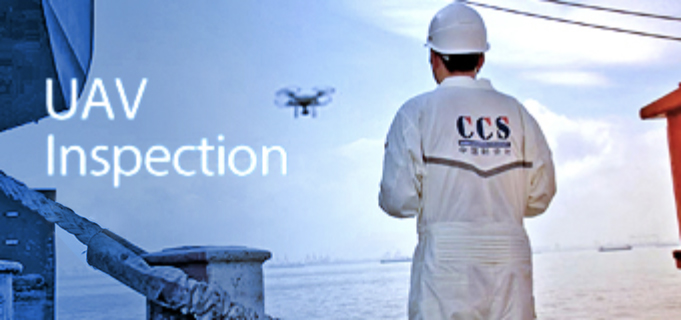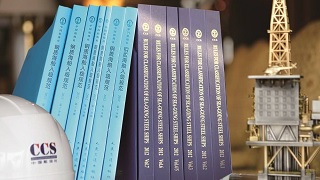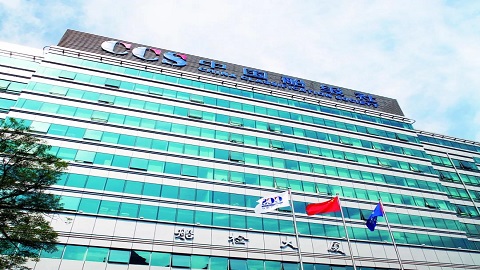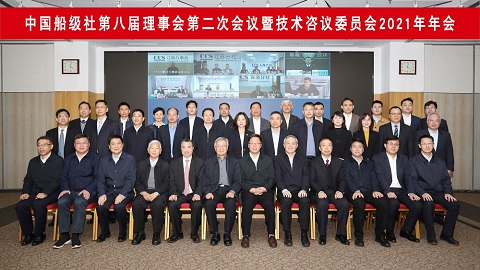The IGC rules and CCS’s Rules for Construction and Equipment of Ships Carrying Liquefied Gases in Bulk (hereinafter referred to as the Bulk Liquid Rules) require the gas carriers to be constructed with protection of double hulls and double bottoms. Special liquid cargo tanks shall be arranged, with a cargo containment system, including the primary panel and the secondary panel, the ancillary insulation and space between panels, and the adjacent structures to support these members when necessary. Five cargo containment systems are defined for LNG carriers, among which the GTT membrane type and Moss spherical tank type are most common.

The IGC rules and CCS’s Rules for Construction
and Equipment of Ships Carrying Liquefied Gases in Bulk (hereinafter referred
to as the Bulk Liquid Rules) require the gas carriers to be constructed with
protection of double hulls and double bottoms. Special liquid cargo tanks shall
be arranged, with a cargo containment system, including the primary panel and
the secondary panel, the ancillary insulation and space between panels, and the
adjacent structures to support these members when necessary. Five cargo
containment systems are defined for LNG carriers, among which the GTT membrane
type and Moss spherical tank type are most common.
1. Conch
cargo containment system (A-type independent
liquid cargo tank)
"Methane Princess" and its sister
ship "Methane Progress", built in 1964, are the first batch of
dedicated LNG carriers. They are equipped with 5083 aluminum alloy prismatic
independent liquid cargo tanks. The tanks are covered with the insulation
materials, such as Plywood and Balsa Wood, which are called Conch cargo
containment system. Such liquid cargo tanks are classified into the
self-supported A-type independent liquid cargo tanks defined by IGC rules.
Conch has high reliability, and "Methane Princess" has been in
operation for more than 30 years and was not retired until 1997. In recent
years, Norwegian LNG New Technologies (LNT) has also invented a brand-new
A-type independent liquid cargo tank LNTA-BOX?, which has been applied to small
and medium-sized LNG carriers.

Figure 1 Five Kinds of Cargo Containment Systems

Figure 2 Insulation of A-type Independent Liquid Containment
System

Figure 3 A-type Independent Liquid Cargo Tank LNTA-BOX?
2. GTT
membrane cargo containment system
At the end of 1960s, French Gas Transport
Company (GT) and French Gas Technology Company (TGZ) developed GT NO and TGZ
Mark membrane LNG cargo containment systems respectively, which are the
predecessors of GTT NO96 and Mark- III membrane tanks.
GTT NO96 is a non-self-supported liquid cargo
tank system, of which the main and secondary panels are welded with invar alloy
membrane with 36% nickel composition. The thinnest lock part is only 0.5mm
thick, and the column plate is 0.7mm thick . Invar alloy has extremely low
thermal expansion coefficient and low thermal conductivity, capable of keeping
a fixed size in a large temperature range. During operation, the invar membrane
is tightly attached to the plywood insulation box, and the force exerted by
liquid cargo on the membrane is directly transmitted to the hull structure of
the cargo tank through the insulation box. The insulation box has some
strength, and the interior is filled with perlite or glass wool insulation
material for insulation. The latest one adopts polyurethane foam board for
insulation, further reducing the evaporation rate, and the system is adopted on
large LNG carriers manufactured in China.

Figure 4 N096 Super + Containment System

Figure 5 GTT NO96
GTT Mark-III is also a non-self-supported
liquid cargo tank system. The primary panel is made of 1.2mm thick 304L
stainless steel membrane with grooved ribs. The grooved ribs in longitudinal
and transverse directions can absorb the deformation of stainless steel
membrane caused by expansion and
contraction. The secondary panel is a
three-in-one composite material bonded with two layers of glass fiber cloth and
one layer of aluminum foil, and the insulating material is reinforced
polyurethane foam .
GTT membrane-type LNG carrier has the
advantages such as small main dimension, high utilization rate of tank
capacity, flat deck, small wind area and small blind area of bridge view under
the same cargo capacity, but it also has loading restriction . That is, the
liquid level must be lower than 10% or higher than 70% to reduce the impact
caused by liquid cargo sloshing and ensure the stability of the whole ship. On
the basis of mature design of NO96 and Mark III, GTT has continuously developed
better and more efficient membrane tank types,
such as NO96L03/L03 +, N096
Super+, MaxN096, Max, Mark-III Flex, Mark V and GTT NEXT1. The latest
generation of LNG carrier built by Hudong-Zhonghua Shipyard has adopted N096
Super+ membrane tank, while that by Dalian Shipbuilding Industry Co. , Ltd. and
Jiangnan Shipyard (Group) Co ., Ltd. have adopted Mark-III Flex membrane tank .

Figure 6 Mark-III Containment System

Figure 7 GTT Mark-III Type
ensure the stability of the whole ship. On the
basis of mature design of NO96 and Mark III, GTT has continuously developed
better and more efficient membrane tank types,
such as NO96L03/L03 +, N096
Super+, MaxN096, Max, Mark-III Flex, Mark V and GTT NEXT1. The latest
generation of LNG carrier built by Hudong-Zhonghua Shipyard has adopted N096
Super+ membrane tank, while that by Dalian Shipbuilding Industry Co. , Ltd. and
Jiangnan Shipyard (Group) Co ., Ltd. have adopted Mark-III Flex membrane tank .
3. Moss
spherical tank cargo containment system (B-type independent liquid cargo tank)
In
the early 1970s,
Moss Rosenburg from
Norway developed the Moss spherical tank cargo containment system . The
liquid cargo tank is a spherical tank, which is independent of the hull and can
support the cargo load by itself. Such tank belongs to the self-sustaining
B-type independent liquid cargo tank defined by IGC rules, and it is equipped
with drip tray as part of the secondary panel. The tank body is made of 9% nickel
alloy steel or 5083 aluminum alloy, and supported by a vertical cylindrical
skirt structure outside the equatorial ring . The connection between the skirt
structure and the equatorial ring of the spherical tank is welded by connectors
with special cross sections, which can absorb the deformation or displacement
caused by expansion and contraction or
shaking of the hull and
tank body . The outside of the
spherical tank is covered with insulating materials such as polyester ammonia
foam, phenolic foam or polystyrene foam .

Figure 8 Moss Rosenburg

Figure 9 Schematic Diagram of IHI-SPB Liquid Tank
Moss spherical tank can be built separately and finally
assembled to the hull
structure . Hence, the construction period is
shorter than that of
membrane - type LNG carrier, and the tank is easy to be inspected and
maintained. At the same time, the spherical design eliminates the influence of
sloshing and can load liquid cargo at any liquid level. Mitsubishi Heavy
Industries of Japan has made overall optimization on the basis of traditional
Moss, and developed a new generation of more efficient Moss LNG carrier, which
has been put into use .

Figure 10 Lifting of Liquid Cargo Tank

Figure 11 KC-1 Membrane Cargo Containment System
4. IHI SPB
Prismatic cargo containment system (B-type independent liquid cargo tank)
In the early 1990s, Ishikawajima-Harima Heavy
Industries of Japan successfully developed SPB independent liquid cargo tank.
It can be known from its name that the tank belongs to SPB self-sustaining
B-type independent liquid cargo tank defined by IGC rules, with prismatic
liquid tank. The liquid tank is made of 5083 aluminum alloy, and insulated by
polyurethane foam. It has the advantages such as high space utilization rate,
no sloshing influence, good visual field of cab, and easy inspection and
repair. The development of IHI SPB made Japan the first country outside Europe
to have a patent for LNG cargo containment system.
5. Cargo
containment system of C-type independent liquid cargo tank
According to the IGC rules, C-type independent
liquid cargo tank is pressure-resistant and self-supported, meeting the
pressure vessel standard. The tank body is made of low-temperature resistant
materials, generally into the cylindrical horizontal tank or spherical tank
with uniform shape and almost no internal structure, which is covered with the
insulating materials. Compared with other cargo containment systems, it is less
difficult to build and is widely used on the small and medium-sized LNG
carriers. The first domestic 30,000m3 LNG carrier delivered by Jiangnan
Shipyard in 2015 used C-type independent liquid cargo tank (German TGE cargo
containment system), which is also the largest C-type LNG carrier in the world.

Figure 12 Composition of KC-1 Membrane Cargo Containment
System
6. KC-1
membrane cargo containment system of
South Korea
As a major country in the construction of LNG
carriers, South Korea always hopes to have its own patented cargo containment
system. After years of research and development, KOREA GAS CORPORATION (KOGAS),
Daewoo Shipbuilding & Marine Engineering (DSME), Hyundai Heavy Industries
(HHI) and Samsung Heavy Industries (SHI) jointly developed South Korean KC-1
membrane tank in 2014, which has been used on two LNG carriers. The cargo
containment system is developed based on the onshore LNG storage tank
technology, which minimizes the dimensions of the hull and the primary panel.
The primary and secondary panels are made of 1.5mm thick 304L stainless steel
with grooved ribs, and polyurethane foam is used for insulation. Its structure
is simpler than GTT membrane design, which effectively reduces the cost.
Obviously, in order to ensure the safety of LNG transportation, any
newly-designed low-temperature containment system must keep improving and pass
the test of time, so as to win the trust of the market.
Note: If you need to reprint, please indicate the source of the information.













